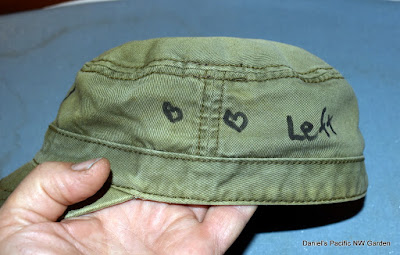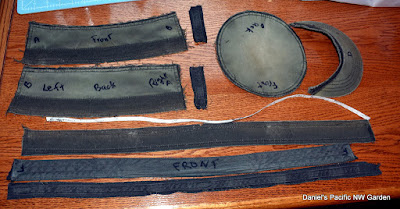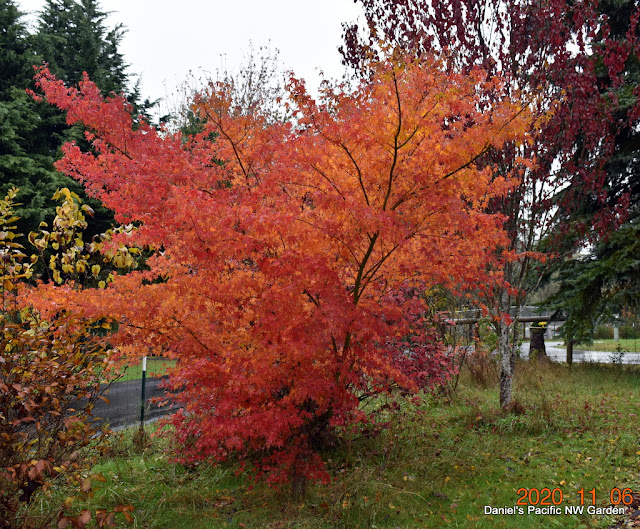Moving on with my experience with the "Fidel Castro" cap, I decided to make one using cotton flannel. Flannel is softer and more comfortable, and possibly easier on the sewing machine compared to the tough ripstop olive denim-type fabric. I used the same pattern, and made some changes. First, for the tip, I used flannel on both the inside and outside layers, with cotton batting between the layers. I pre-washed the flannel to adjust for shrinkage. To give the sides a little more firmness, I used a thin fusible interfacing ironed to one layer, and cut both inner and outer layers of flannel fabric, so that was like a sandwich: flannel:interfacing:flannel. The bill was a sandwich as before, using flannel instead of ripstop and using thick heavy interfacing to give it some substance. This time, I kept the binding on the sides, cutting the fabric on the bias. That made it possible for the hat to stand a little taller than the first attempt. For the sweat band, I bias-cut new dish-towel fabric, which is all cotton, durable, soft and absorbent.
Here is how it came out. It's still interesting that the fabric came together so differently from the original cap despite using the same pattern. Not just the fabric pattern and color, but the shape and overall appearance of the cap. My first thought was "Elmer Fudd Cap" so I did a web search on "Elmer Fudd Cap" and there they were. However, most Elmer Fudd caps have the ear flaps that tie to the top when not needed, whereas this cap does not have ear flaps.
This is a big improvement on the first prototype cap. Using the sewing machine walking foot, assembly was much easier. It didn't skip any stitches at all. The thickest parts were a little challenging but I am learning how to do better with these challenges. This hat turned out to very comfortable. There is no belt at the back - it's a good snug fit due to bias cutting the binding and sweat band. The original cap didn't have a belt either, and it wore fine for many years.
I might make a few other adjustments before making the next cap. I'm happy with it as is, but there is always something to do to make things a little better. I probably need to add about 1/4 inch to the oval top, because quilting the fabric makes it a little smaller in diameter. I adjusted the sides to account for that. Before doing that, I want to put it through the washer / dryer to see how it re-shapes. It should be OK. This cap is meant to be treated like any other clothing, washed and dried just like a shirt or trousers.


















